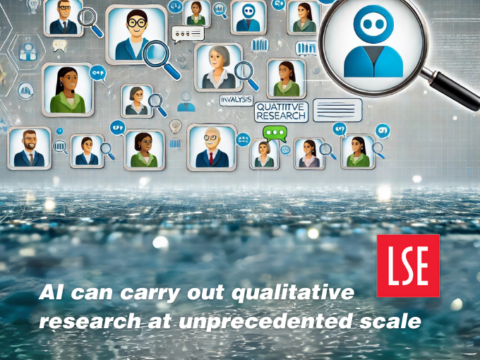Extensive revising is required by many journals in the social sciences. It is expected that authors “revise and resubmit” (R&R) their manuscripts several times before they are accepted for publication, a process that is time consuming, demoralising, and stifling of creativity. In this post, Christine L. Williams discusses the potential benefits and drawbacks of abolishing the R&R as an option for journal editors.
Publishing an article in a sociology journal requires extensive revising. It is not uncommon for articles to go through multiple rounds of peer review and revision before they see the light of day. Does all of this revising actually improve a paper? It is debatable. But the unintended consequences of this publishing system are not. This norm of multiple “revise-and-resubmits” is time consuming, demoralising, and stifling of creativity.
Here is a primer on journal publishing in sociology (skip this paragraph if you know how the system works). An initial submission to a journal must first pass the editor’s determination of its suitability for review. As many as half of all papers are “desk rejected” — deemed inappropriate or insufficient for scholarly review. The rest are sent to three reviewers (the “peers” in peer review). Sociology journals are “double blind,” meaning that neither the author nor the reviewers are known to each other. The reviewers read the article and offer written comments. Sometimes these comments are perfunctory; sometimes they are multiple pages long. Based on the reviewers’ assessments, the editor decides if the article should be accepted (rare), revised-and-resubmitted (more common), or rejected (most common). If invited to R&R, the author rewrites the paper to address the reviewers’ concerns, writes a “letter to the reviewers” explaining the changes made, and resubmits a new version of the paper to the journal. Then the process begins anew. On the advice of the second round reviewers (who may or may not be among the original reviewers), the editor may decide to reject, to issue another R&R (in which case the process begins anew for the third time), or to conditionally accept the paper. In the latter case, the author makes the requested revisions and if the editor is satisfied, the paper is accepted for publication.
Many scholars can tell horror stories about revising a paper for years only to have it rejected after multiple rounds of reviews. What can be done to improve the publication process?
The goal of this labyrinthine and lengthy process is to publish scientifically sound sociology, but it has significant downsides. Many scholars can tell horror stories about revising a paper for years only to have it rejected after multiple rounds of reviews. What can be done to improve the publication process?

How do you approach the edits?
The first step is to eliminate the R&R. After peer review, editors should have two options: reject or conditionally accept. A conditional acceptance means that the editor or their deputy commits to working with the author until the paper is published. There could never be a second round of anonymous reviews, which only encourage reviewers to dig in their hills, pick at nits, become combative, etc. There may be occasions when the editor needs to consult with a specific reviewer a second time to verify that the author has correctly answered the questions raised by the review. However, in this case, the editor has already become a negotiator and advocate for the author, not a disinterested arbiter.
This approach will bring sociology journal publishing more in line with book and magazine publishing. Some academic journals currently follow this model (Sociological Science is one example).
This approach assumes a good faith effort by both the editor and the author to work together to produce a publishable paper. I realise that is not always an appropriate assumption and there will be times when one or the other party feels aggrieved and unsatisfied. But unlike our current system, in which the author revises without the promise of future publication, in my model, both editor and author share responsibility for bringing an article to fruition. I believe that these changes could make the publication process more humane and encourage more creativity.
Eliminating the R&R is more humane than our existing system because it builds relationships between the editor and the author, who are known to each other.
Eliminating the R&R is more humane than our existing system because it builds relationships between the editor and the author, who are known to each other. The anonymity of our current review process can breed abuse. Scholars are scarred by insensitive and sometimes brutal comments from anonymous reviewers sent to them by disinterested editors who pass them on with dispiriting form letters. I know people who have dropped out of graduate school because of this demoralising experience.
As a post-doc, sociologist Allison Wynn wrote about the insensitivity of academic reviewers, drawing an analogy to twitter trolls. After suffering at the hands of both, she invented a game, “Twitter Troll or Academic Reviewer?” See if you can pick which statement came from which source (this excerpt is reprinted here with her permission):
- “I find the discussion undisciplined, with many unsubstantiated claims. […] Where’s the evidence?”
- “I encourage you to realize asserting reality doesn’t affect reality. I especially encourage you to realize changing the words you use to describe that reality definitely have no effect on that reality.”
- “They have no data to support their conclusion.”
- “Are you a mind reader? How do you know the male presenters used technical info to ‘intimidate’ women into leaving?”
- “It is unclear what your piece adds to our knowledge.”
- “This is the researcher making up information and pretending it’s objective truth.”
- “Even a sympathetic reader has reason to question the objectivity of the findings.”
The odd numbers are reviewer comments; the even numbers are anonymous tweets she received about the paper after it was published.
If academic publishing has become a humiliating gauntlet, it is time to change the process. In our current system, authors are in thrall to multiple waves of these anonymous reviews. Eliminating the R&R limits them to a single wave. This change will not civilize cruel reviewers, but it could lessen their power. After the reviews are in, the editor issuing a conditional accept becomes the only person that the author must satisfy. Revising would become more focused and less dependent on the assessments of unnamed future reviewers.
Eliminating the R&R could also make journal articles more creative. Currently, authors are asked to satisfy reviewers who may disagree among themselves about the value of the contribution. This is especially a problem when editors deliberately choose reviewers who lack expertise about the topic of the manuscript. Trying to appease a wide range of scholars representing conflicting perspectives can water down the contribution, resulting in publication of banal results and stifling controversy. The system of R&R shackles authors to a formulaic approach to writing so as not to raise the ire of reviewers. In my proposed system, editors could empower authors to experiment with new forms, something few scholars dare attempt in the face of anonymous review.
Abolishing the R&R will have drawbacks. It will increase the power of the editor, which will not eliminate (and may exacerbate) the arbitrariness of the current system. It will also result in more work for editors, not all of whom are currently equipped to devote themselves to this expanded role. In my opinion, if editors assume a more active role in shaping the content of their journals, they should be compensated accordingly. Today, many journals pay a nominal “stipend” to editors, which is adequate if all they do is act as conduits for peer review, but it will not be enough if they are editing papers for publication.
Abolishing the R&R is not a popular opinion. When I have made this case publicly I have been accused of dangerously degrading the scientific process. But I am not arguing against revision; only resubmission. I do not believe that multiple R&R’s improve sociology.
We have multiple guides on publishing and writing – take a look.

Professor Christine L. Williams
Author
Dr Christine Williams is Professor of Sociology and the Elsie and Stanley E. (Skinny) Adams, Sr. Centennial Professor in Liberal Arts. She was the 111th president of the American Sociological Association and has served on the editorial boards of numerous journals. Her research focuses on gender, race, and class inequality in the workplace.
This essay was originally published in Sociologica. V.16 N.1 (2022), 67–70, as Abolish the R&R and is reproduced under a CC BY 4.0 licence.
Note: This article gives the views of the authors, and not the position of the NIHR, Dementia Researcher or the LSE Impact Blog. Shared under the Creative Commons Attribution 3.0 Unported (CC BY 3.0)

 Print This Post
Print This Post





